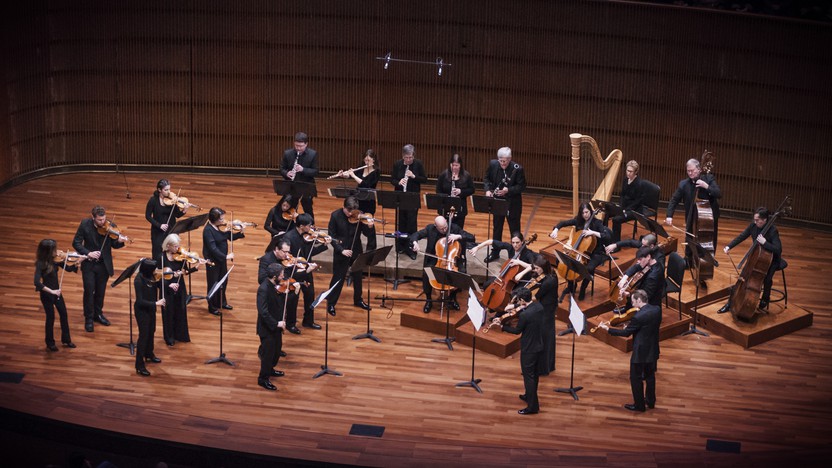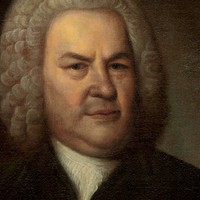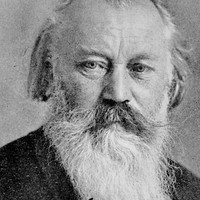Musician Appreciation Concert



Johann Sebastian Bach probably composed his Concerto for Two Violins around 1730, not long after he agreed to lead Leipzig’s Collegium Musicum. This talented amateur group, founded in 1702 by a young Georg Philipp Telemann, provided an outlet for Bach to play instrumental music in a sociable atmosphere, away from the weekly grind of his church duties. Many of the works that Bach brought to the Collegium were arrangements of works from an earlier period when he worked a secular job in Cöthen, so it is possible that the Double Violin Concerto had its origins in some earlier source material.
Along with Bach’s two surviving Violin Concertos (also prepared for the Collegium), the Double Concerto borrows from a style popularized several decades earlier in northern Italy by Vivaldi and his contemporaries. Following the Antonio Vivaldi model, a ritornello structure in the first movement sets up a strong theme in the accompanying ensemble that makes its presence felt with every return. The added magic in this movement is the sophisticated counterpoint, drawing on the fugue techniques that Bach advanced far beyond his Italian colleagues. Counterpoint is a crucial feature of the slow movement as well, with the two soloists weaving a patient fugue over an accompaniment that has just enough of a dancing lilt (and a tempo that Bach made sure to mark as “not too slow”) to propel the melodies forward. The contrapuntal technique of canon — with one voice following close after another in an echo effect — makes for a particularly vibrant finale.
Aaron Grad ©2024

At the age of 57, Brahms declared his retirement from composition, intending his Second String Quintet from 1890 to be his final work. Eventually an encounter with a clarinetist coaxed Brahms back to composing — twice actually, since he “retired” again in 1894 — so the quintet turned out not to be his swan song after all. In both the first quintet from 1882 and this successor, Brahms used Mozart’s configuration with a second viola, as opposed to the second cello found in quintets by Boccherini and Schubert. (Brahms had drafted a two-cello quintet back in 1862, but after his friend Joseph Joachim expressed misgivings about the scoring, Brahms converted it into a piano quintet.)
Adapting a sketch drafted for an unrealized fifth symphony, Brahms assigned the quintet’s heroic first theme to the cello. The two violas come to the fore in the contrasting theme, their harmonies gliding together as smoothly as two dancers in a Viennese ballroom. The Adagio also links the two violas over pizzicato cello, with a stately pace and dotted rhythms that hint at a bygone Baroque sensibility. For the finale, a viola introduces a compact motive that moves through a variety of keys, speeds and orchestrations until it climaxes in an accelerated tempo. It is intriguing to imagine these final bursts of ecstatic music as an intentional goodbye, supposing Brahms had stuck with his planned retirement.
Aaron Grad ©2020
 Listen to Audio
Listen to Audio
Ludwig van Beethoven made his first sketches for the Fifth Symphony in 1804. He composed the bulk of the symphony in 1807–08 while working concurrently on the Sixth Symphony, and he introduced both works during a four-hour marathon concert in Vienna on December 22, 1808, at which the frigid temperatures and under-rehearsed orchestra made more of an impression than the immortal music heard there for the first time.
The Fifth Symphony comes from the heart of Beethoven’s “middle” period, a phase when his encroaching deafness changed his relationship to composing and performing, and when the elegant classicism of his early works gave way to a more focused and concentrated manner of writing. Rather than issuing flowing melodies, Beethoven’s quintessential works from this period build highly integrated forms out of compact, elemental materials.
The most famous musical nugget Beethoven ever conceived — perhaps the most recognizable motive ever penned by a composer — comes at the start of the Fifth Symphony, when the orchestra delivers four unadorned notes: three short repetitions of G dropping to a sustained E-flat, representing two notes from the home triad of C minor. This one motive fuels the entire first movement based in Beethoven’s favorite key for stormy and fateful music, and traces of it return later in the symphony.
The Andante con moto second movement features a double set of variations, alternating the development of two contrasting themes. Some of the accompanying rhythms echo the short-short-short-long rhythmic pattern from the first movement, contributing to the symphony’s organic cohesion.
The Scherzo retreads the central tonal conflict of the work, juxtaposing a moody first theme in C minor and a spry fugal section in C Major. A coda builds tension that releases directly into the concluding Allegro, which adds piccolo and trombones to the scoring for extra orchestral brilliance. With this grand finale, Beethoven’s Fifth completes its fateful journey to a triumphant resolution in C Major.
Aaron Grad ©2024
Second Annual Musician Appreciation Concert
Judith Garcia Galiana, Event Chair
Please join us for our second annual Musician Appreciation Concert in celebration of the musicians of The Saint Paul Chamber Orchestra. You and fellow SPCO supporters will be treated to a very special evening where you’ll experience a one-of-a-kind program featuring audience favorites by Beethoven, Bach and Brahms. Net proceeds from ticket purchases for this event will go directly to SPCO Musicians in appreciation for the passion, dedication and incredible artistry they share with thousands in our community every year.
Please note: a portion of the ticket price for this concert is a tax-deductible donation, so ticket prices differ from our regular concert pricing. This concert is not eligible for ticket exchanges, free child or student tickets, Create-Your-Own Packages, Concert Membership or voucher redemption.
Premium Packages and Seats
* Gold Package - $10,000
Includes 10 premium concert tickets and invitation to post-concert reception with musicians
* Silver Package - $5,000
Includes 6 premium concert tickets and invitation to post-concert reception with musicians
* Premium Seat - $1,000
Includes 1 premium concert ticket and invitation to post-concert reception with musicians
Event Tickets
* Scale 1 seat - $500
* Scale 2 seat - $250
* Scale 3 seat - $100
Please note: Your purchase total minus $15 per ticket is tax deductible to the extent allowed by law
Click “buy tickets” to select your own seats from our online seating chart. For access to Gold or Silver Packages or Premium Seats not shown online, please contact Rosie Hughes at 651.292.6988 or rhughes@spcomail.org.
Double your support for the SPCO musicians! Make a donation to this event on top of your ticket purchase, and your donation will be matched by the SPCO Board of Directors, up to $1,000 per gift. Can’t attend the performance? Click here to make a contribution without purchasing tickets and your gift will be matched.
Can’t attend the concert but want to support the SPCO musicians? Click here to make a contribution to this special event.
Get driving directions and find nearby parking.
Find dining options close to the venue.
View seating charts to find out where you'll be seating.
SPCO concerts are made possible by audience contributions.
For exclusive discounts, behind-the-scenes info, and more:
Sign up for our email club!
